Pros
Cons
Introduction
Product Overview
{{section_header}}{{section.name}}{{/section_header}}
Meet the Turtle Beach Ear Force X12, gaming headset for Xbox 360.
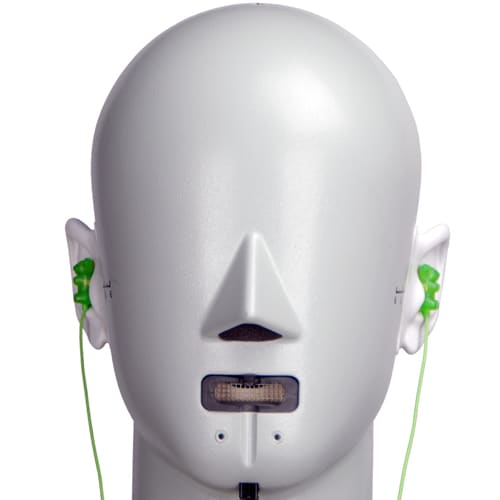
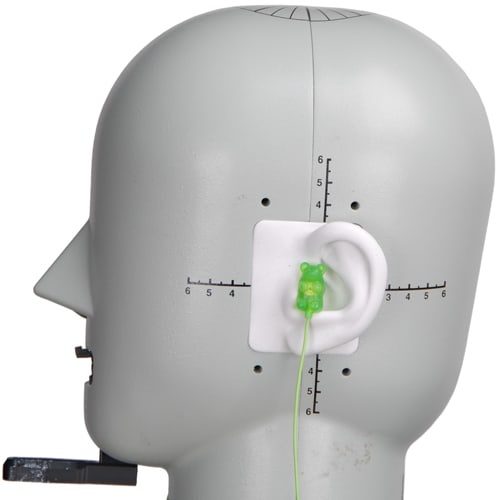
Speakers
{{section_header}}{{section.name}}{{/section_header}}
Here we see the speaker element, guarded by a branded mesh.
Back
{{section_header}}{{section.name}}{{/section_header}}
The back of the {{product.name}} sports the Turtle Beach logo, as well as some design accents that scream "XBOX", if you weren't already aware as to what this headset is for.
Band
{{section_header}}{{section.name}}{{/section_header}}
One of the cooler things about this headset is how ludicrously thick and soft the band is. Pictured is the underside, which will cradle your cranium for hours on end.
Cable
{{section_header}}{{section.name}}{{/section_header}}
Normally this would be a bad thing, but the cable of the {{product.name}}s is 16 feet long, allowing you to sit far back from the tube and still enjoy your games.
Not what we usually see here at HPI, the {{product.name}} uses a USB connection to power the headphones, and a 3.5mm plug for both the microphone and headset. It can be a little awkward, but you should be fine with the USB connection and your console, provided you're not doing much co-op.
The plugs are robust and well guarded (at least, as much as can be expected), so you shouldn't have many durability issues for the contact or solder points.
Additional Features
{{section_header}}{{section.name}}{{/section_header}}
Attached to the left ear cup is the boom microphone, which can be articulated to the angle and orientation that the user prefers, as the material is quite malleable.
Also included in the packaging for the {{product.name}} is an RCA cable adapter, though this probably won't see much use.
In the Box
{{section_header}}{{section.name}}{{/section_header}}
In the packaging for your brand-spankin' new {{product.name}}s is your headset, assorted documentation, and RCA cable adapter.
Durability
{{section_header}}{{section.name}}{{/section_header}}
Given that these cans are molded from plastic, it's no surprise that you really shouldn't toss these around in the heat of a ragequit. Not only that, but you can easily damage the microphone if you do this. Still, they are reasonably well-made; just treat them well.
Aesthetics
{{section_header}}{{section.name}}{{/section_header}}
Harkening back to design elements (mainly the color scheme) of the original XBox, the {{product.name}}s sport lime green mesh on the backs of their cans, as well as a rather prominent TB logo. While the most of the guts of the {{product.name}}s are ensconced in black plastic and polyester, the overall look of the headset feels rather appropriate for the console (especially if you have the elite edition 360).
Frequency Response
{{section_header}}{{section.name}}{{/section_header}}
Because the {{product.name}}s have a feature that allows you to control bass and sub-bass emphasis, we tested the {{product.model}} several times to see how it affected the sound of the headset, and found that it works exactly as advertised, with few minor consequences.
With the "bass boost" on, you can see that the {{product.name}}s indeed have emphasized bass, as well as very few ranges of de-emphasis, like the 3-6.5kHz range (where many gunshots and high-mid tones live).
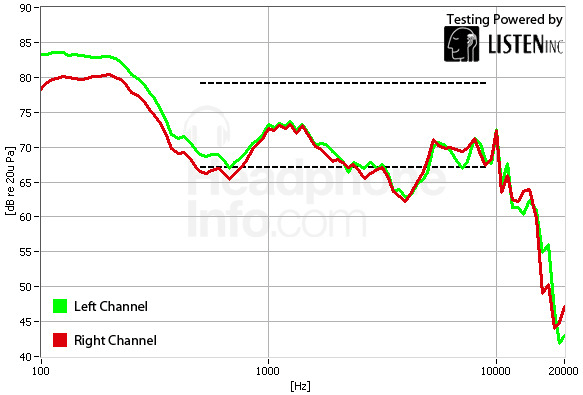
If you turn the "bass boost" dial all the way down, you can expect to see a frequency response like pictured below, or somewhere in between this and the response shown above. The response isn't too different outside of the fact that bass seems to be underemphasized a bit, which could be a good thing if your games feature a lot of loud, booming explosions.

Click here for more information on our frequency response test.
Distortion
{{section_header}}{{section.name}}{{/section_header}}
Oof. While the {{product.name}} certainly has its high points, this is a low point that is about impossible to ignore. With the bass boost on, distortion was off the charts in the low end, and abysmally bad in the rest of the range of frequencies audible to the human ear (pictured below)

Considering that voice chat clients like the one used by XBox Live are getting better, this level of distortion will start to get more noticeable as the years go by. While it's price point is decidedly very "entry level", this is not a set of headphones you will probably want to listen to music on, nor will you get the best experience you can with a headset if sound quality matters to you. This probably shouldn't be a big deal based on the type of game you play, however, as shooters don't really require high sound quality when firefights get intense, nor can you often hear the music over the chatter of a fully automatic weapon. If you like expansive RPGs with impressive orchestral pieces, however, you may want to forget this headset exists.
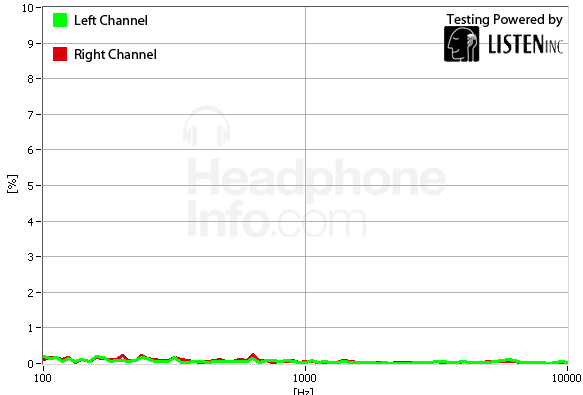
Click here for more information on our frequency response test.
Tracking
{{section_header}}{{section.name}}{{/section_header}}
With the "bass boost" feature maxed out, the tracking was affected strangely, pushing the low and mid tones towards the left channel slightly, but it's enough to be slightly audible.

When not boosted, the tracking response is fairly pedestrian, as its shifts in channel preference are measurable, but barely noticeable if they can be considered that. Not the greatest, but it could be a lot, lot worse.
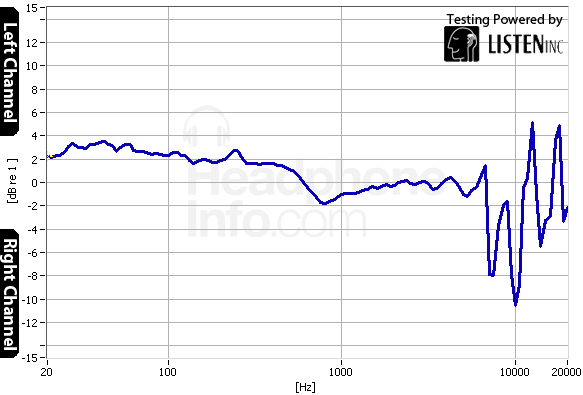
Click here for more information on our frequency response test.
Isolation
{{section_header}}{{section.name}}{{/section_header}}
When you're in the heat of battle, be aware that outside noise may just make its way inside your ear canals, especially if it's a low rumble. Given that games are typically played in a bedroom or unoccupied living room, this shouldn't be a huge deal.

Click here for more information on our isolation test.
Leakage
{{section_header}}{{section.name}}{{/section_header}}
Unfortunately, the {{product.name}}s leak a fair bit of sound, but you can control this by not listening to your game above 80dB (you should be doing this anyways). If you're in a loud deathmatch, chances are other people will hear if they're close.
Click here for more information on our leakage test.
Maximum Usable Volume
{{section_header}}{{section.name}}{{/section_header}}
Pushing the {{product.model}}s to 113.11dB will see them cross over the 3% total harmonic distortion mark, but you should never listen to your headphones this loudly to begin with, so the maximum usable volume score here is largely academic. If you listen to your games at a safe volume, you should be fine.
Click here for more on our maximum usable volume test
Short-Term Use
{{section_header}}{{section.name}}{{/section_header}}
When you first throw the {{product.name}}s on your dome, you'll notice that not only are they light on the ears, but they also don't move around a whole bunch, which is just about as much as you could ask of them. The band is very plush, and doesn't trap heat all that much.

Extended Use
{{section_header}}{{section.name}}{{/section_header}}
Over time, the ear cups can get a little warm, but it really isn't bad at all. They net the same score here too.
Customizability
{{section_header}}{{section.name}}{{/section_header}}
Aside from using the RCA adapter, there's really not a whole lot you can do with this headset to make it unique or different than the stock option you bought.
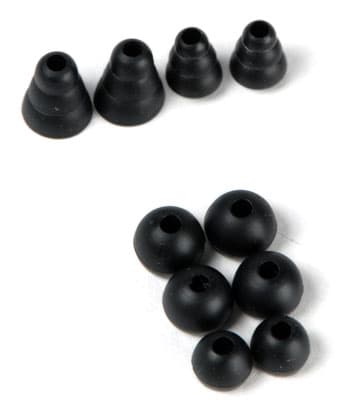
Cable Connectivity
{{section_header}}{{section.name}}{{/section_header}}
If you've looked a the product tour, you know this cable is huge. But exactly how huge? 16 feet long, complete with in-line remote, USB hookup, and 3.5mm headphone and microphone plugs. An RCA adapter is included in the packaging, if need be. Possibly one of the most important features of the cable is the in-line remote, which allows you to alter the volume of game sounds, chat volume, microphone muting, and bass boost in-game. While it does pose a durability concern, it is a very convenient feature for gamers.
Portability
{{section_header}}{{section.name}}{{/section_header}}
Because of the gigantic cord, and the lack of a carrying case, these cans are very difficult to port around other places. If you have a large messenger bag, that could help, but don't plan on it being easy to budget your space.
Maintenance
{{section_header}}{{section.name}}{{/section_header}}
While there isn't much that would break on your headphones save for the cord, there really isn't much of anything you can do to clean or repair them. Be careful with these.
Other Features
{{section_header}}{{section.name}}{{/section_header}}
Remote & Mic
Attached to the left ear cup is the boom mic of the {{product.name}}. Malleable and thin, there were no reported problems with volume or static in use with MMO games on XBox live. That doesn't mean your mileage won't vary, but it is promising.
The remote is home to the volume dials, the bass boost dial, and the microphone mute switch. There's a clip on the back for your shirt, and that just about sums up everything that's interesting about it.
Volume Control
Being able to control game volume and chat volume separately is a huge plus that shouldn't be overlooked. It's a big plus to be able to mute your annoying partner without having to open up the options screen.
Design
{{section_header}}{{section.name}}{{/section_header}}
By their designs, the {{product.name}} and the Razer Carcharias are suited for different needs as a gamer. For starters, the {{product.name}} is tailored to the XBox gamer on a budget, and does not need anything fancy or compatible with other systems. The Carcharias on the other hand, is suited for the PC gamer who demands great sound with open-backed cans.
Frequency Response
{{section_header}}{{section.name}}{{/section_header}}
While the {{product.name}} can be a little light on the bass until you crank the bass boost, overall its frequency response is about as even as you can expect from an entry-level gaming headset, with a couple ranges of boosted emphasis. The Carcharias, on the other hand is mostly flat, with a slight emphasis on bass frequencies.
Distortion
{{section_header}}{{section.name}}{{/section_header}}
The Carcharias has no issue with distortion, which is far less than be said for the {{product.name}}s.
Tracking
{{section_header}}{{section.name}}{{/section_header}}
Neither set has perfect tracking, and consequently, you won't notice a huge difference between the two in this regard.
Isolation
{{section_header}}{{section.name}}{{/section_header}}
Neither set of cans isolates well, but the {{product.name}}s do better.
Comfort
{{section_header}}{{section.name}}{{/section_header}}
Both of these headsets are crazy-comfortable, but you'll have to see how they fit on your head first before determining which one is best for you.
Verdict
{{section_header}}{{section.name}}{{/section_header}}
If you are a PC gamer, we'd suggest the Razers over the Turtle Beach cans, as for $20 more, you get a lot more headset for the money. That being the case, you should be aware that the {{product.name}}s are compatible with the XBox and PC, whereas the Razers are not compatible with the Microsoft console. Keep this in mind.
Design
{{section_header}}{{section.name}}{{/section_header}}
While this may strike some people as an unfair comparison, it stands to reason that taking a gander at the high-end will give you a better picture of what's out there. The Astro A40 gaming headset is compatible with just about everything under the sun, and it boasts a rather slick design and endorsements. Both headsets are closed-back, but the Astro headset is far more expensive: $200 for the headset itself, and $250 for the PS3/XBox compatible versions, and require what Astro's mixamp.
Frequency Response
{{section_header}}{{section.name}}{{/section_header}}
Proof that price doesn't always buy performance, the {{product.name}}s actually seem to provide a better frequency response as far as headphones go. That's not to say there isn't a more complicated situation, though. Because the A40s underemphasize the 1-8kHz range, most gunshots, small arms fire, and electricity noises will be muffled, but the emphasized bass will make the low rumble of explosions super loud. You might like this, but for some games this isn't ideal. The {{product.name}}s, on the other hand, allow you to adjust the bass, and provide a somewhat more even frequency response.
Distortion
{{section_header}}{{section.name}}{{/section_header}}
Again, the {{product.name}}s have terrible distortion problems, while the A40s have almost no audible distortion.
Tracking
{{section_header}}{{section.name}}{{/section_header}}
While the {{product.name}}s are somewhat erratic in their tracking response, the A40s are mostly consistent, outside of a blemish at 5kHz.
Isolation
{{section_header}}{{section.name}}{{/section_header}}
Both headsets are fair isolators at best, but the {{product.name}}s block out slightly more of the mid range sounds common in living rooms.
Comfort
{{section_header}}{{section.name}}{{/section_header}}
Both of these headsets are very comfortable, but different people have different heads, and as such, this is a subjective comparison. That said, the angled drivers of the A40s are rather nice, but we'd recommend trying both out if you can before you buy.
Verdict
{{section_header}}{{section.name}}{{/section_header}}
This one's tough, because both headsets have their strong suits, and they're each enough to sway people with different predilections one way or another. While the {{product.name}}s may not be the best headset on the market, they certainly are affordable, and their comfort and frequency responses are fairly good. However, the A40's microphone is a little bit better, and the lack of distortion is huge to players who want to listen to the in-game music. The drawback? The A40s can cost up to 5 times what you'd pay for the {{product.name}}s, which is far out of range for many gamers.
Conclusion
{{section_header}}{{section.name}}{{/section_header}}
All in all, the {{product.name}}s are exactly what they're billed as: an affordable (primarily) XBox gaming headset. It doesn't stun, and it doesn't disappoint either. While the distortion problem is real, and certainly more than a little annoying, the {{product.name}}s are still better in this regard than some of the lower-end headphones not suited for games.
Aside from the distortion issue, consumers will have to make choices in terms of which aspects of gameplay are important to them. For example, for a first-person shooter, the distoriton may not be that much of an issue at all, and the only thing needed is a headset with a fair audio performance and a microphone. Sure, for the avid RPGer, these may not be the best, but different 'sets work for different people.
If you're looking to save some coin, and you're itching to get your deathmatch going on XBox live, these may be a decent pickup for you if you just need a headset quickly. Just keep in mind the shortcomings of the headset and you'll be fine.
Happy gaming.
Meet the tester
A seasoned writer and professional photographer, Chris reviews cameras, headphones, smartphones, laptops, and lenses. Educated in Political Science and Linguistics, Chris can often be found building a robot army, snowboarding, or getting ink.
Checking our work.
Our team is here to help you buy the best stuff and love what you own. Our writers, editors, and experts obsess over the products we cover to make sure you're confident and satisfied. Have a different opinion about something we recommend? Email us and we'll compare notes.
Shoot us an email

